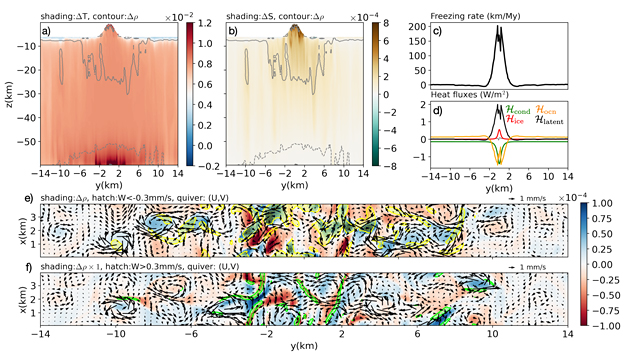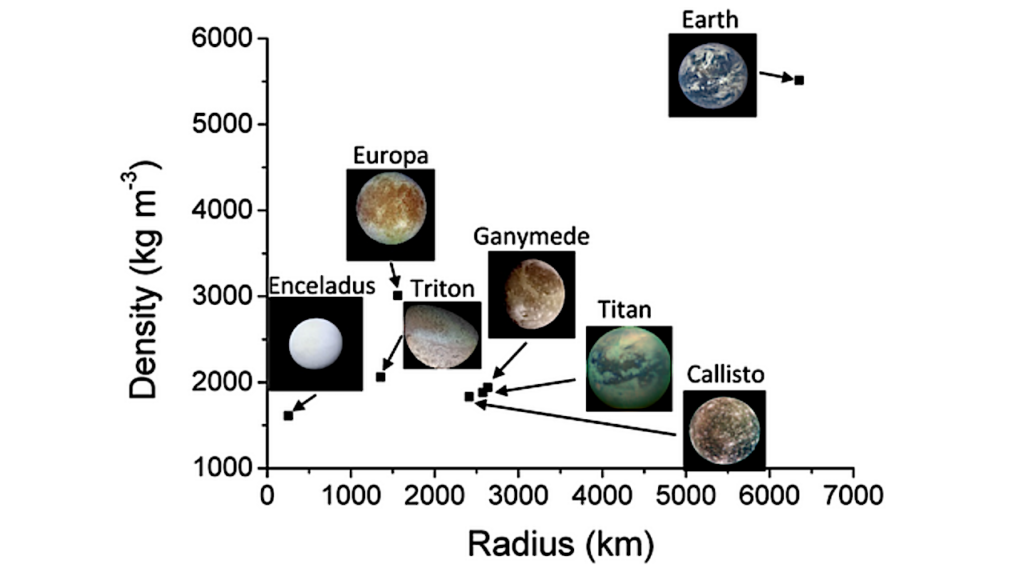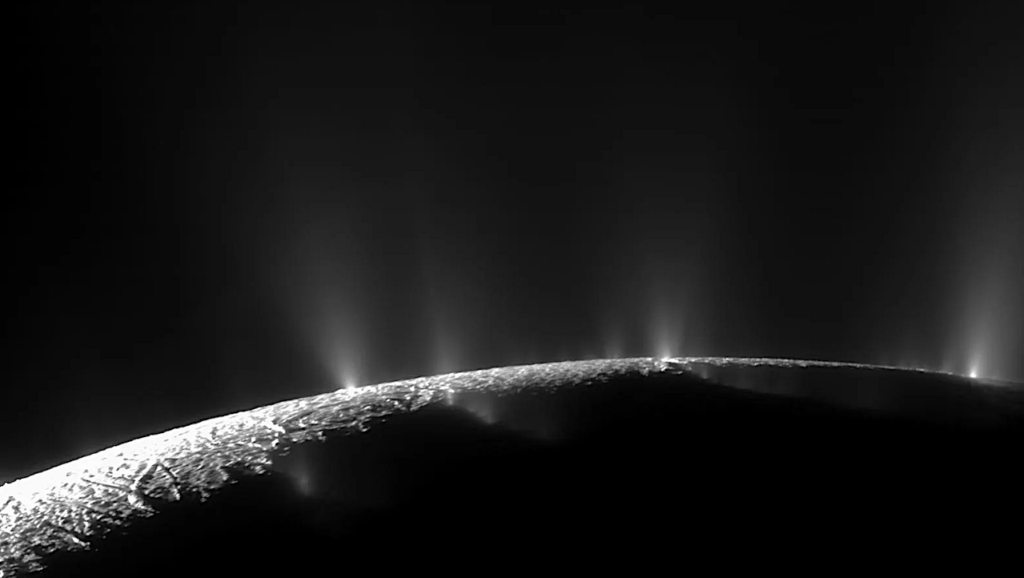Dynamics Of Geysers And Tracer Transport Over The South Pole Of Enceladus

Over the south pole of Enceladus, an icy moon of Saturn, geysers eject water into space in a striped pattern, making Enceladus one of the most attractive destinations in the search for extraterrestrial life.
We explore the ocean dynamics and tracer/heat transport associated with geysers as a function of the assumed salinity of the ocean and various core-shell heat partitions and bottom heating patterns.
We find that, even if heating is concentrated into a narrow band on the seafloor directly beneath the south pole, the warm fluid becomes quickly mixed with its surroundings due to baroclinic instability.
The warming signal beneath the ice is diffuse and insufficient to prevent the geyser from freezing over. Instead, if heating is assumed to be local to the geyser, emanating from tidal dissipation in the ice itself, the geyser can be sustained.
In this case, the upper ocean beneath the ice becomes stably stratified and thus a barrier to vertical communication, leading to transit timescales from the core to the ice shell of hundreds of years.
Wanying Kang, John Marshall, Tushar Mittal, Suyash Bire
Subjects: Earth and Planetary Astrophysics (astro-ph.EP)
Cite as: arXiv:2205.15732 [astro-ph.EP] (or arXiv:2205.15732v1 [astro-ph.EP] for this version)
Submission history
From: Wanying Kang
[v1] Tue, 31 May 2022 12:23:11 UTC (35,461 KB)
https://arxiv.org/abs/2205.15732
Astrobiology








